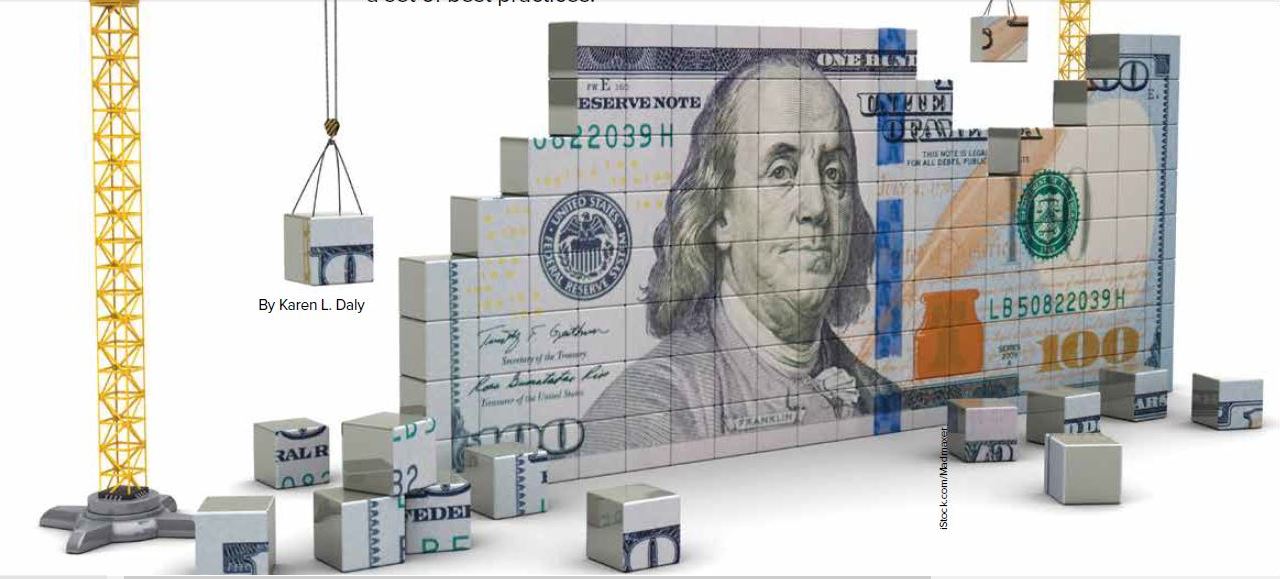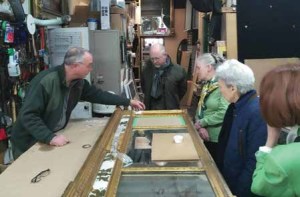
If I had a dollar for every time a well-intentioned board member, volunteer, or staff member suggested one of the above fundraising tips, my organization would have a Harvard-like endowment and run a healthy surplus each year!
Alas, in my almost two decades working at small museums, I have found that most fundraising conversations or brainstorming sessions focus on three largely flawed ideas:
- The Quick Fix Idea: there is one quick, easy way to bring in all the money we need to run our museum, and we just need to figure out what it is.
- The Bake Sale Idea: you can solve a $100,000 fundraising challenge by selling $2 cupcakes (or mugs or bricks or scarves) to your friends and family.
- The Let’s Finish Fundraising Idea: if you are successful with this particular fundraising effort, you will be done—never again having to raise money to support your organization.
Unfortunately, these mindsets limit our small institutions, sometimes severely. Let’s move away from these flawed mentalities and toward fundraising best practice. It’s not hard to do; it just takes some planning—and then sticking to the plan.
Why Not Be the Best?
Following fundraising best practice means focusing on three things: financial sustainability, philanthropic support from individuals, and developing a successful
fundraising process.
Financial Stability

It’s easy to get so bogged down in the annual budget details that we focus on financial viability rather than sustainability. In general, financially viable organizations are ones that are bringing in more income than they’re spending. Certainly, that’s critical, but being viable does not ensure that your museum has the financial resources to be sustainable in the long term.
According to John Durel’s publication Building a Sustainable Nonprofit Organization, a sustainable organization is one that, through beneficial circumstances and good professional practices, generates enough financial and community support to guarantee its continued existence on an indefinite basis. A key to establishing financial sustainability is to diversify income streams, ensuring that all your eggs aren’t in
one basket.
For a small museum, this means developing a good mix of funding sources, including contributed income (mainly from individuals plus some grants and corporate sponsorships), earned revenue (program fees, rental events, gift shop, etc.), and earnings from the endowment or invested funds. You also want a good mix within those various groups so that you’re never overly reliant on one grant program or one “angel” donor.
Philanthropic Support Comes from Individuals
According to Giving USA, the overwhelming majority of philanthropic support in the US comes directly from individuals—either through donations during their lifetime (72 percent of total giving in 2017) or as bequests (9 percent of total giving).
Simply put, no small museum can maximize its fundraising opportunities relying only on grants or corporate giving. Successful fundraising in our nation means asking individual donors to contribute to your mission—and in 2017, more than $18 billion was directed toward arts, culture, and humanities. Rather than chasing competitive grants or elusive corporate gifts, most small museums would be best served developing a strong major gifts program focused on individuals who care about (and, better yet, are engaged in) your mission.
Fundraising Is an Ongoing Process
Both staff and board members need to let go of the notion that fundraising is something they need to check off and be done with to get back to the “real work.” For the executive director and board, fundraising is the “real work,” and it should be a part of all staff and volunteer duties. Without adequate funds, we can never truly advance our mission nor achieve our organizational vision, and fundraising ensures
that we are constantly recruiting and engaging stakeholders in our effort.
To ensure your fundraising process is ongoing, follow these five steps.
- Identify. Who are your prospects? How close are they to your organization? How much do they care about your mission? How much capacity do they have?
- Cultivate. How can you build a relationship with a prospective donor? What is his or her specific interest in your museum and its programs? Who within your organization is connected to this prospect—or who could be?
- Solicit. What will you ask for? How will you ask—direct mail, telephone, face-to-face, peer, online?
- Acknowledge. How will you acknowledge gifts? Tax receipts should be offered at a
minimum—and are required for gifts at $250 and above. Will you list names in a newsletter? Print/email an annual report? Personally call? - Steward. How will you keep in touch with donors after the gift? You want to tell donors how the project is progressing, their gift’s impact, and what’s next for the organization. This phase should lead back into the cultivation phase. Avoid jumping straight from acknowledging one donation to soliciting the next. Donor communication should be more than fundraising asks.
Applying Best Practices
Armed with these best practices, you can consider implementing fundraising ideas.
First, always start with your strategic plan. This should be a written, long-range document focused on the next three to five years. The strategic plan will include not only your organization’s mission (what purpose it serves) but also your vision (what impact you want to have). Your strategic plan goals will have funding implications based on your answers to the following questions: What is your vision for the future? What steps will you take to reach that vision?
How much will that cost?
Next, create a development/fundraising plan to reach that vision. Did that just stop you in your tracks? Keep moving by asking and answering these questions: How much do you want to raise? For what?

Who needs to be involved? What do they need to do? By when? How much will it cost? How will you evaluate success? How will you report on progress?
As you’re building the fundraising plan, carefully consider the costs and benefits of each fundraising method. A board member once asked me, “What is the easiest way we can raise the most money?” That stuck with me and has helped me prioritize fundraising methods ever since. Below are some common ways small museums raise funds, with some considerations for each.
Museum memberships/friends: Who is your target audience? How will you entice them to join? How will you keep them engaged once they’ve joined?
Annual appeal/annual fund: How can you encourage major gifts? Are you focusing on member renewals? How do you cultivate and recognize donors?
Special solicitations/project-based fundraising: What individuals/groups have the greatest interest in this project?
Grants: How can you cultivate connections to local/regional/state funders? Have you researched grant options ahead of time—before you have a need to apply?
Corporate sponsorships: What is the reputation of a potential sponsor in your community? Avoid “strings attached” offers.
Planned giving: How can you encourage donors and prospects to include your museum in their wills? Where can you make available the appropriate language for donors? (Planned gifts are an important part of a long-term fundraising plan, but they typically are not helpful for current fundraising needs.)
Galas and events: Do you have a strong committee and an approved budget? Can you get donations to cover most costs? Is this a true fundraiser or only a friend-raiser?
Earned revenue—rental events, gift shops, program fees, admissions: Do your fees undervalue your site or program? However, don’t run amok with non-mission-critical earned revenue efforts. For example, weddings can be lucrative for many sites, but you don’t want to squeeze out mission-relevant field trips, tours, and workshops. Strive for a careful balance.
In the end, success really does breed success. Once you get that first grant award or major gift, you have professional credibility. And that will help you achieve the next grant or gift and will motivate others to join the effort.
Successful fundraising starts by accepting that there’s no one quick funding fix. Instead, stick to best practices, involve every member of your staff and board, and carefully align your fundraising efforts with your strategic goals. Yes, it’s more work than one great bake sale, but this process can actually lead to long-term financial sustainability.
7 Tips For Fundraising Success
- Plan, plan, plan. Consider your various fundraising options, gather stakeholder input, strategically identify the best path forward, and secure board or committee buy-in. That way, key players agree about the options being pursued—and why other options are not—and are engaged in the process from the outset.
- Communicate with your accountant/treasurer. A number of years ago, we considered running a fundraising trip in which participants would pay a fee to join the tour and would be required to donate at a certain level. Sounds great, right? Our accountants reminded us, however, that IRS guidelines prohibit required donations—gifts must be voluntary to qualify for tax benefits. They saved us from a significant headache.
- Develop a fundraising plan that aligns with your budget and strategic plan. Your staff and board might be great at brainstorming ways to make money. But you need to align the development plan with the organizational budget and strategic plan so that you move forward with only those great ideas that you can afford, support your mission, and will move your organization closer to your vision.
- Start small, but deliberately. Launching one well-considered fundraising effort will likely prove more successful than trying to start six new initiatives overnight.
- Consider the costs and profit margin before diving in. Not all fundraising methods are created equal, and not all will benefit your organization in the long term. Carefully consider the short- and long-term staff, volunteer, and financial resources involved in any fundraising initiative.
- Cultivate existing donors. Personal touches and relationships are at the core of successful fundraising programs. Retaining existing donors is much less costly than recruiting new ones. For small museums, this typically means directors must prioritize major donor cultivation and stewardship.
- Keep the fundraising message positive. Crisis appeals lose their effectiveness if every annual fund letter is a plea to help keep the doors open. Also, donors want to invest in organizations that are successful, well-managed, and making an impact—so present your museum in that way.
Resources
Sarah Sutton, Is Your Museum Grant-Ready?, 2018
Cinnamon Catlin-Legutko and Stacy Klinger (Eds.), “Financial Resource Development and Management,” Small Museum Toolkit, Book Two, 2013
Salvatore G. Cilella, Fundraising for Small Museums, 2011
John Durel, Building a Sustainable Nonprofit Organization, 2009







